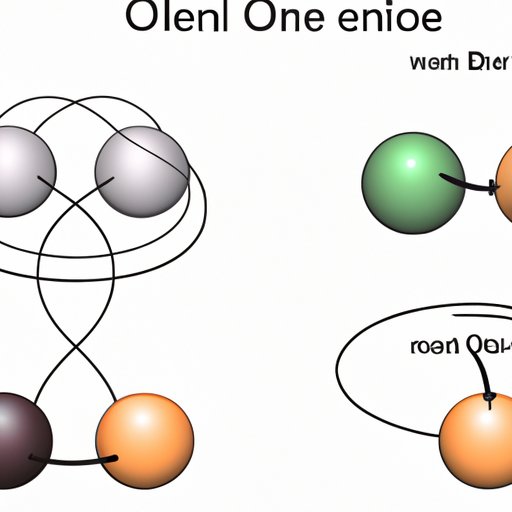
Introduction
Counting electrons is an essential part of chemistry. It allows chemists to understand how atoms interact and form molecules. Accurately counting electrons can help determine the reactivity of a molecule, its properties, and its behavior in different chemical reactions. Electron counting is vital in many fields, such as pharmaceuticals, materials science, and energy research. This article will guide you through different aspects of electron counting, from beginners’ step-by-step guide to advanced techniques used by professional chemists.
The Ultimate Guide to Counting Electrons: Tips and Tricks for Accurate Results
Electrons are negatively charged particles orbiting the nucleus of an atom. They play a crucial role in chemical reactions, determining how atoms interact with each other. Counting electrons is vital in chemical reactions, allowing chemists to determine the reactivity and properties of molecules.
When counting electrons, it’s essential to identify the oxidation state of atoms. The oxidation state indicates the number of electrons an atom has gained or lost during a chemical reaction. For instance, in a molecule of hydrogen chloride (HCl), hydrogen has a +1 oxidation state, while chlorine has -1. You can also use Lewis structures, a diagram showing the bonding between atoms, to count electrons.
Another crucial aspect of counting electrons is understanding resonance structures. Resonance structures are different ways of drawing a molecule’s Lewis structure, where atoms form double or triple bonds with each other. To accurately count electrons in such structures, consider the multiple resonance structures that contribute to the overall electron count.
Demystifying Electron Counting: A Step-by-Step Guide for Beginners
If you’re new to electron counting, we’ve got you covered. Here’s a step-by-step guide to help you count electrons in simple molecules:
- Identify all the atoms in the molecule.
- Count the total number of valence electrons for each atom (valence electrons are the electrons in the outermost shell of an atom).
- Calculate the total number of valence electrons in the molecule.
- Draw the Lewis structure of the molecule, placing the atoms and bonds between them according to the number of valence electrons.
- Count the number of lone pairs and shared pairs of electrons in the Lewis structure.
- Add up the total number of electrons in the molecule (the sum of lone pairs and shared pairs).
It’s important to note that beginners may make common mistakes when counting electrons, such as failing to account for resonance structures or forgetting to calculate the oxidation state of an atom. Be sure to review these concepts and practice counting electrons in simple molecules before moving on to more advanced techniques.
Mastering Electron Counting: Techniques Every Chemist Should Know
Professional chemists use various techniques to count electrons, such as valence bond theory and molecular orbital theory. Valence bond theory explains chemical bonding in terms of overlapping atomic orbitals, while molecular orbital theory describes bonding as the interaction between atomic orbitals creating molecular orbitals. These theories help determine the number of electrons in a molecule and explain its properties and reactivity.
Another essential technique for chemists is using computational methods to count electrons. Computational chemistry allows chemists to simulate chemical reactions using computer models, saving time and money in the laboratory.
Finding the Number of Electrons: Common Methods and Pitfalls to Avoid
There are several methods used to find the number of electrons, such as x-ray crystallography and spectroscopy. X-ray crystallography is a technique that uses x-rays to determine the structure of a crystal, including the position of atoms and the number of electrons in a molecule. Spectroscopy, on the other hand, analyses the interaction between light and matter to determine a molecule’s properties and structure.
Despite the many methods available, it’s important to avoid common pitfalls that can lead to inaccurate results. For instance, improper sample preparation or data interpretation can affect the electron count. Always ensure to follow set procedures, and seek help from colleagues or professionals if needed.
From Theory to Practice: Applying Electron Counting Strategies in Real-world Scenarios
Electron counting is essential in many industries and research fields, such as pharmaceuticals and materials science. For example, chemists can use electron counting techniques to optimize and design new chemical reactions for drug synthesis. In materials science, electron counting helps determine a material’s electronic properties and potential applications.
Another real-world application of electron counting is in energy research. Counting electrons can help determine how to generate and store energy more efficiently and sustainably.
Conclusion
Counting electrons is a crucial skill in chemistry. Whether you’re a beginner or a seasoned chemist, mastering electron counting techniques is essential. In this article, we’ve covered tips and tricks for accurate results, a step-by-step guide for beginners, and techniques every chemist should know. Additionally, we’ve discussed common methods for finding the number of electrons and pitfalls to avoid. Finally, we’ve illustrated how electron counting is applied in real-world scenarios. Keep practicing and learning more about electron counting and its potential applications in various fields.





